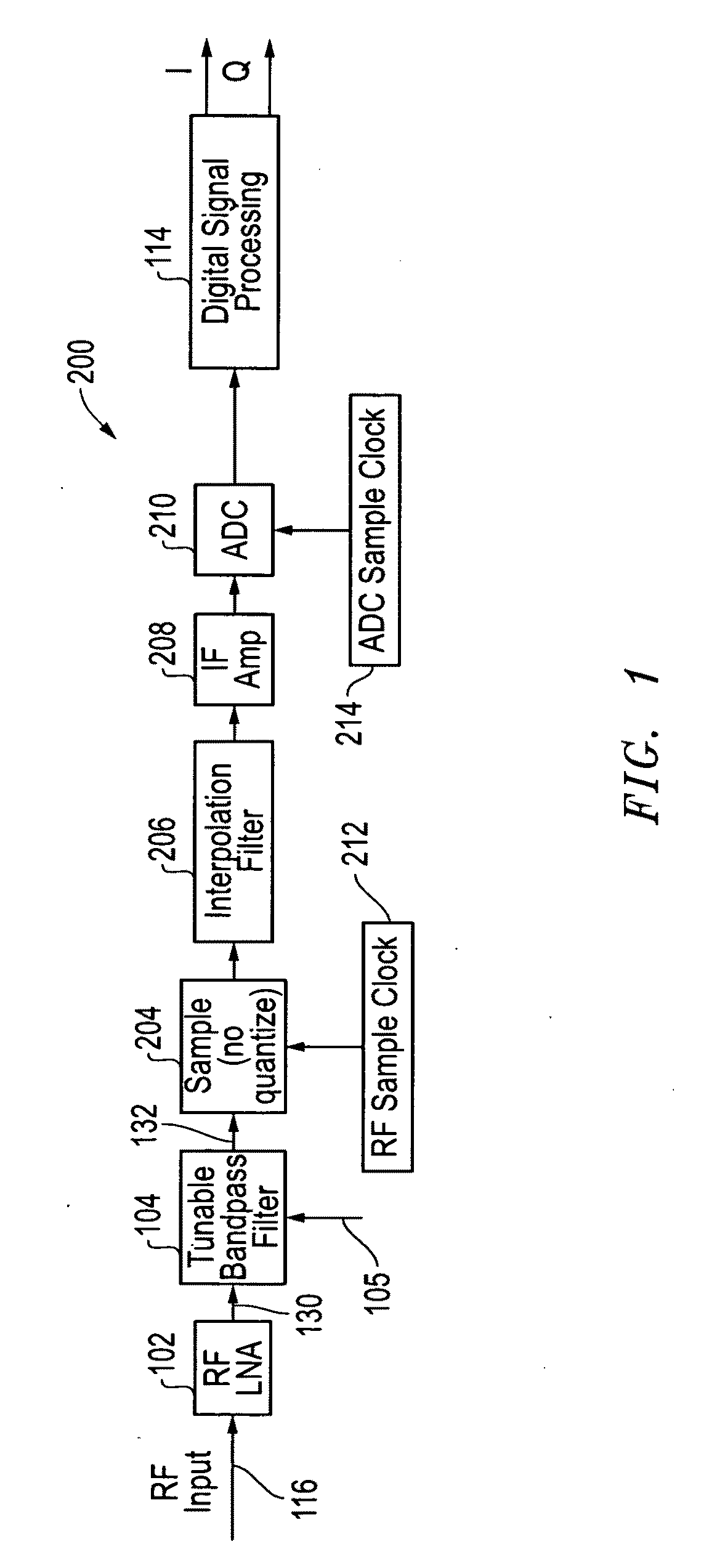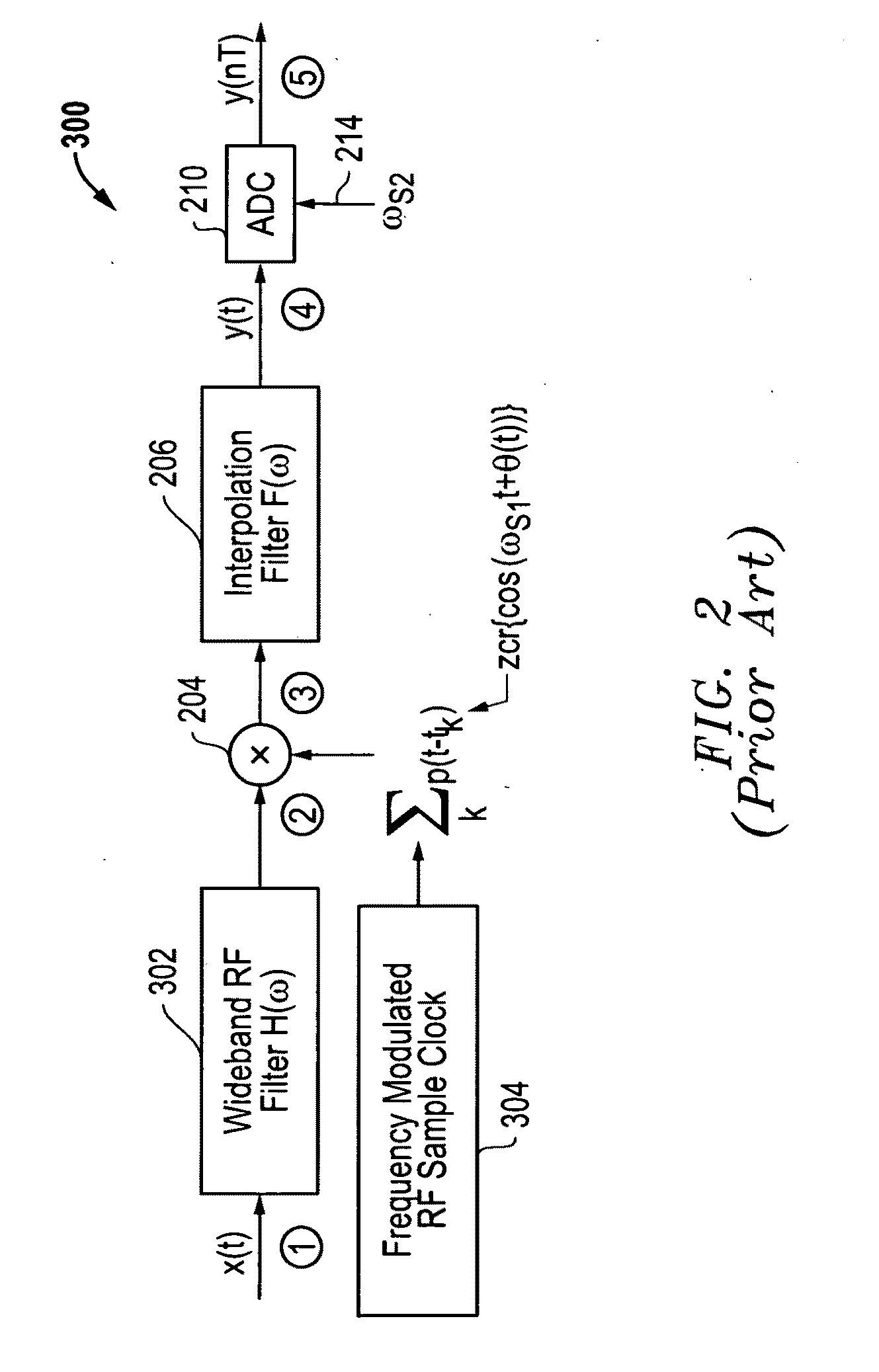System and method for improved spur reduction in direct RF receiver architectures
a linearity technology, applied in the direction of digital transmission, amplitude demodulation, pulse technique, etc., can solve the problems of non-desired spurious artifacts and spread in the frequency domain, and achieve the effect of improving the linearity of direct radio frequency (rf) receiver architecture, reducing spurious artifacts, and increasing spur-free dynamic rang
- Summary
- Abstract
- Description
- Claims
- Application Information
AI Technical Summary
Benefits of technology
Problems solved by technology
Method used
Image
Examples
Embodiment Construction
[0023]The systems and methods disclosed herein provide improved spur reduction architectures that reduce spurs and improve linearity in direct radio frequency (RF) receiver architectures. As described further below, these spur reduction architectures described herein provide improved receiver performance. For example, the architectures improve receiver performance by providing reductions of certain types of spurs, such as ADC tonal spurs, thereby making the receiver operation more linear. The architectures also ease requirements for anti-alias filters, particularly those used in bandpass sampling receivers, due to improved out-of-band rejection thereby making the receiver operation more linear with respect to desired band. And the architectures in effect perform a type of signal dithering thereby improving the linearity of the receiver ADC processing. These spur reduction and linearity improvements result from inducing a different modulation on non-desired leakage interfering signal...
PUM
 Login to View More
Login to View More Abstract
Description
Claims
Application Information
 Login to View More
Login to View More - R&D
- Intellectual Property
- Life Sciences
- Materials
- Tech Scout
- Unparalleled Data Quality
- Higher Quality Content
- 60% Fewer Hallucinations
Browse by: Latest US Patents, China's latest patents, Technical Efficacy Thesaurus, Application Domain, Technology Topic, Popular Technical Reports.
© 2025 PatSnap. All rights reserved.Legal|Privacy policy|Modern Slavery Act Transparency Statement|Sitemap|About US| Contact US: help@patsnap.com



